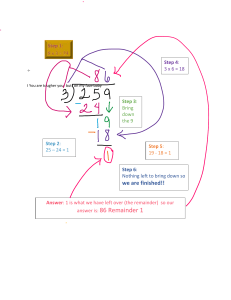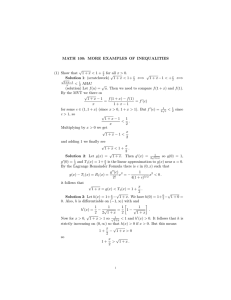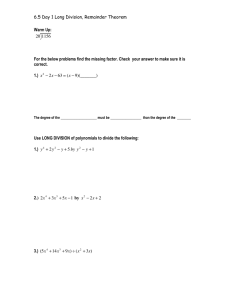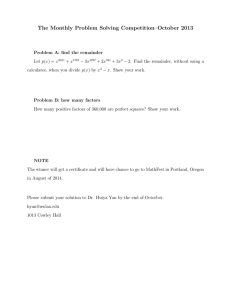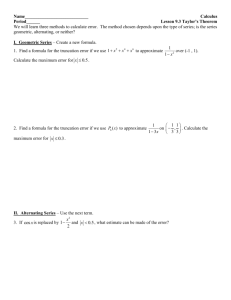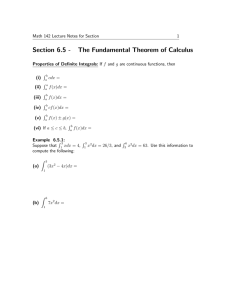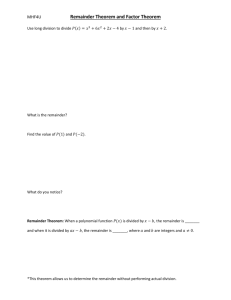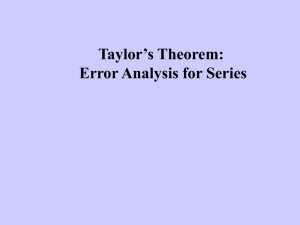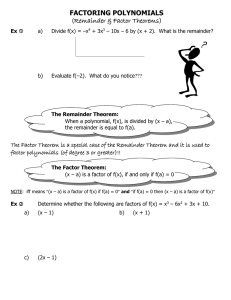The Integral Form of the Remainder in Taylor's Theorem MATH 141H
advertisement
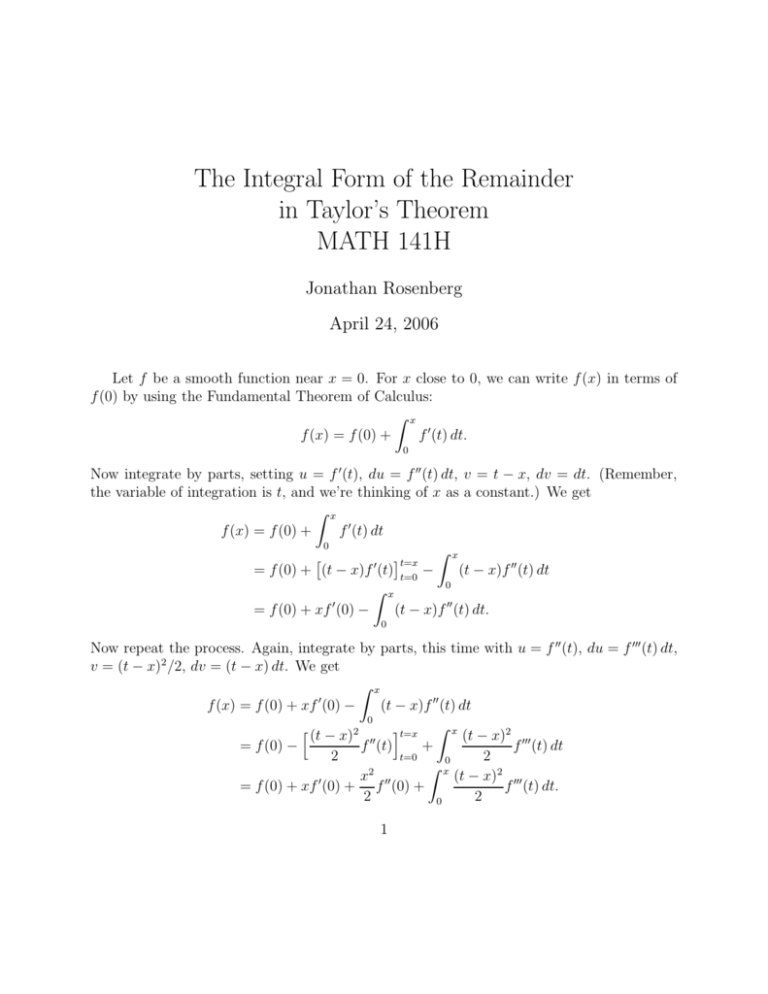
The Integral Form of the Remainder in Taylor’s Theorem MATH 141H Jonathan Rosenberg April 24, 2006 Let f be a smooth function near x = 0. For x close to 0, we can write f (x) in terms of f (0) by using the Fundamental Theorem of Calculus: Z x f (x) = f (0) + f 0 (t) dt. 0 Now integrate by parts, setting u = f 0 (t), du = f 00 (t) dt, v = t − x, dv = dt. (Remember, the variable of integration is t, and we’re thinking of x as a constant.) We get Z x f (x) = f (0) + f 0 (t) dt 0 Z x t=x 0 = f (0) + (t − x)f (t) t=0 − (t − x)f 00 (t) dt 0 Z x = f (0) + xf 0 (0) − (t − x)f 00 (t) dt. 0 Now repeat the process. Again, integrate by parts, this time with u = f 00 (t), du = f 000 (t) dt, v = (t − x)2 /2, dv = (t − x) dt. We get Z x 0 f (x) = f (0) + xf (0) − (t − x)f 00 (t) dt 0 it=x Z x (t − x)2 h (t − x)2 00 f (t) f 000 (t) dt + = f (0) − 2 2 t=0 Z x0 2 (t − x)2 000 x f (t) dt. = f (0) + xf 0 (0) + f 00 (0) + 2 2 0 1 Continuing this process over and over, we see eventually that xn (n) f (x) = f (0) + xf (0) + · · · + f (0) + Rn (x) n! 0 where the remainder Rn (x) is given by the formula Z x Z x (x − t)n (n+1) (t − x)n (n+1) n f (t) dt = f (t) dt. Rn (x) = (−1) n! n! 0 0 In principle this is an exact formula, but in practice it’s usually impossible to compute. However, let’s assume for simplicity that x > 0 (the case x < 0 is similar) and assume that a ≤ f (n+1) (t) ≤ b, 0 ≤ t ≤ x. In other words, a is a lower bound for f (n+1) (t) on the interval [0, x], and b is an upper bound for f (n+1) (t) on the same interval. Then we get Z x Z x Z x (x − t)n (x − t)n (n+1) (x − t)n a dt ≤ Rn (x) = f (t) dt ≤ b dt. (∗∗) n! n! n! 0 0 0 But Z x 0 x h n+1 it=x (t − x)n n (t − x) dt = (−1) n! (n + 1)! t=0 0 h n+1 i 0 xn+1 (−x) = (−1)n − = −(−1)n (−1)n+1 (n + 1)! (n + 1)! (n + 1)! n+1 x = . (n + 1)! (x − t)n dt = (−1)n n! Z Plugging this into (∗∗), we see that a xn+1 xn+1 ≤ Rn (x) ≤ b , (n + 1)! (n + 1)! which is Lagrange’s estimate for the remainder. 2

